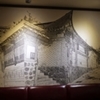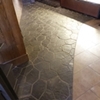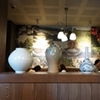
Empirical Study of Space Localization Approach on Brand Attitude: The Case of Starbucks in South Korea
Abstract
Background The competitive landscape of global companies seeking to build a favorable and relatable brand image in countries not native to their origin is becoming ever more dynamic. One notable trend has been the use of space localization approaches to address the cultural and emotional needs of local consumers. Considering the expanding role of coffee shops, a localized space identity may act as a powerful advantage to directly connect with local consumers. This study explores the effect of localization efforts in space identity and its relation to actual consumer attitude toward the space and the brand itself, focusing on the case of Starbucks in South Korea.
Methods This study includes field and survey research. Field research was conducted at five Starbucks locations in the metropolitan area, selected for their clear usage of localized space design. Survey research subjects were the customers visiting those five research sites. Factor analysis, regression analyses, and frequency analysis were used to validate research hypotheses.
Results Three common factors were extracted from the space images shaped by consumers experiencing localized space identity—namely, stylishness, comfort, and uniqueness. These images were found to positively affect consumer attitude toward the space and ultimately the brand itself.
Conclusions This study verified that localized space identity is evidently and effectively being delivered to consumer perception to induce positive brand attitude. Such finding provides the grounds for global companies seeking to differentiate their strategy by tailoring their approach to better suit the needs of local consumers.
Keywords:
Localization Approach, Space Identity, Brand Attitude1. Introduction
The current trend of coffee shops in South Korea is not merely that of a beverage consumption but of a cultural propensity. The role of coffee shops has expanded to include providing a cultural space for relaxation and social interactions. Consumers no longer settle for just quality or price but seek to be satisfied on a higher level of their cultural and emotional needs. Thus, the value of coffee consumption has evolved to place significant importance in cultural identity as well as in space experience that complement such value. In light of such change in consumer expectations, a notable trend amongst global companies seeking to build a meaningful relationship with local consumers has been the use of space localization approach. Companies are increasingly adopting cultural marketing strategies to directly relate with their local consumers and to ultimately enhance their brand image and brand awareness (Noh & Jang, 2011). This study explores the effect of localized space identity on brand attitude, focusing on the case of Starbucks in South Korea as Starbucks actively utilizes such localization strategy amongst coffee shops and is a leader in its industry.
2. Literature review
2. 1. Localization strategy
Amidst the rapidly growing global market, it is important for global companies to simultaneously pursue both standardization and localization strategies (Bartlett & Ghoshal, 1989) and to find and deliver an optimal level of both (Buzzell, 1967; Fayerweather, 1969). From the perspectives of companies seeking to globalize, standardization and localization are opposite ends of the strategic spectrum. Standardization strategy is based on the concept of the universal global market, proposed by Levitt (1983), and allows a greater possibility to reach an economy of scale through a unified approach (Kim, 2009) and gives the benefit of cost reduction for the company (Ryans Jr. & Ratz, 1987). On the contrary, localization strategy is based on the view that one communication style cannot satisfy diverse consumers due to geographical and cultural differences (Jeong, 2009). It gives global companies a competitive advantage through tailored efforts that address the specific needs and preferences of local consumers. In discussions of standardization-localization issue, a lopsided strategy has been criticized for its limitations and the universal understanding is that global companies are at best to strive for an optimized equilibrium of both strategies that effectively respond to the situation of the local market and the company itself (Buzzell, 1967; Fayerweather, 1969, Douglas & Wind 1987).
2. 2. Space identity
In the context of a corporation, its identity can be categorized into a corporate identity, a brand identity, and a space identity, according to its scope and nature. Corporate identity embraces the overall image of the company that integrates the company’s personality, skills, products, markets, businesses, mission and vision into one consistent image (e.g., Schmitt & Simonson, 1997). Brand identity is a combined image of brand associations that companies wish to deliver to their target consumers. Its purpose is to induce ideal associations in the minds of their consumers to ultimately enhance their brand image (e.g., Aaker, 1991; Aaker, 1996). Space identity is the consistent and unified expression of a brand’s image in threedimensional spaces, whose purpose is to yield intended brand attitude through positive brand experiences that differ from competitors through various elements within a space (e.g., Kwon & Chang, 2012). Corporate identity includes brand identity, which includes space identity.
Today, the role of space identity has evolved from merely a place that provides services and products to a place that delivers a brand’s image (Lee, 2013). In particular, the importance of space design and the resulting space identity is growing as a key marketing strategy to cope with the diversifying and segmenting consumer needs in response to the changing societal environment. In building an ideal space identity, brand image needs to effectively be integrated in the space to induce a desired brand attitude (Lee, 2013; Budelann, Kim, & Wozniak, 2010).
2. 3. Brand attitude
What consumers associate with when they recall a brand is a critical factor that determines the long-term relationship between the consumer and the brand (Fournier, 1998). Keller (1993, 1998) defined brand image as “perceptions about a brand as reflected by the brand associations held in consumer memory.” Brand associations, as defined by Aaker (1991, 1996), are anything that is connected to the brand in the memory. Among the elements that make up brand associations, brand attitude influences consumers’ purchasing behavior and loyalty, and is defined as the general evaluation a person has of the brand (e.g., Aaker, 1991; Keller, 1998).
3. Research
This study is in two parts: field and survey research. Field research was conducted at five Starbucks locations in the metropolitan area of Seoul—Leema Building, Anguk, Samcheongdong, Sogongdong, and Bukchonro—that most clearly applied localization strategy in their space design. These locations were analyzed based on the analysis table of space identity components formulated in 3.1. The survey research was conducted over three days—the 27th of May, and the 1st and the 2nd of June, 2019—to the customers visiting the five preselected research locations. A total of 170 survey samples were collected. SPSS Statistics 25.0 was used to analyze the data.
3. 1. Field research
As discussed, the ultimate goal of a space identity is to build a positive brand image. Successful application of localization strategy in the visual elements of a space will increase familiarity and favorability of the brand in the minds of consumers. This study classified the elements of space identity in accordance to the purpose and the nature of the research, with reference to preceding research on culturally adapted visual expressions in the formative features of spaces (Jang & Choi, 2010; Oh & Lee, 2007; Lee & Choi, 2006; Jun & Nam, 2005).
Space was analyzed on two dimensions—physical and visual elements—to see “where” and “how” localization strategy was applied in building a space identity. More specifically, physical elements were divided into structural elements, which include walls, partitions, floor, and ceiling, and object elements, which include furnishings and decorative objects.
To see how each localized spatial component was visually expressed, its traditionality of the visual form was analyzed on three grounds—motif & pattern, material, and color. These three variables were adopted and modified from a preceding study (Jun & Nam, 2005) that researched on the expressive tendency of Korean traditionality in contemporary interior spaces. First, Korean traditional motifs and patterns are forms that represent Korea’s traditional appeal, sentiments, humor and elegance. In this particular field research, traditional motifs and patterns are mostly portrayed as the ribs of doors and partitions or as actual photographs or paintings of ancient Korea. Traditional materials are mainly wood, stone, Korean paper, traditional roof tile and metal, and traditional colors include brown, taupe, off-white and gray, the natural unpainted colors of those traditional materials. Of course, the colors of Dancheong are traditional colors of Korea, but within the scope of the research sites of this study, those colors were not observed in their space design. Table 1 summarizes the components of the field research analysis and Table 2 shows an example of field research result for the case of Starbucks Anguk branch.
3. 2. Survey research
Survey questionnaires were constructed to investigate four broad categories: image associations induced by localized space identity, consumer attitude toward localized space identity, brand attitude, and demographic statistics. The specifics of the questionnaires are described in Table 3.
3. 3. Research model
This study, which explores the effects of localized space identity on consumer attitude, consists of two stages. First, the study extracts the specific image associations induced by localized spaces by conducting a factor analysis on emotional adjectives evaluated by visiting consumers. Then regression analyses are carried out to verify the hypotheses that the image associations induced by localized spaces positively affects consumer attitude toward the brand space, which in turn positively affects consumer attitude toward the brand itself. The research model is diagrammed as in Figure 1.
H1. Space image induced by localized space identity positively affects consumer attitude toward the space.
H2. Consumer attitude positively affects consumer attitude toward the brand.
3. 4. Demographic characteristics
Table 4 summarizes the demographic characteristics of the survey respondents. Regarding gender distribution, 44.1% were male and 55.9% were female. Regarding age distribution, 20 to 29 make up the largest portion of 60.0%, 30 to 39 make up 20.6%, 40 to 49 make up 13.5%, and 50 and up make up the remaining 5.9%.
3. 5. Reliability analyses
The average Cronbach’s alpha of the five items that measure brand attitude was 0.920, so the items were overall reliable. Also, the Cronbach’s alphas when each of the five items were deleted all slightly reduced so we can deduce that all five items are appropriate to be used in statistical analysis.
The average Cronbach’s alpha of the five items that measure space attitude was 0.877, so the items were overall reliable. However, the Cronbach’s alpha increases to 0.894 when the item “I prefer to come to this particular Starbucks even when there is another Starbucks nearby” is deleted. Hence, only four items excluding the item of consumer loyalty toward a specific store were used in statistical analysis.
The average Cronbach’s alpha of the sixteen items that measure space image was 0.901, so the items were overall reliable. However, the Cronbach’s alpha when the items “I feel accustomed to this space” and “This space feels oriental” are deleted increases to 0.908 and 0.903, respectively. Thus, it is reasonable to use the remaining fourteen items in measuring space image.
4. Result
4. 1. Field research result and cases of localized space identity
In observing the five research sites that most prominently incorporated localization strategy in their space identity, the frequency of using walls and screens were much higher than that of using floors and ceilings amongst structural elements. This may be due to the fact that walls and screens cover larger areas and are more visible and thus give the advantage of efficiently inducing positive space experience through differentiated approaches despite where customers seat themselves within the space. Between the two object elements, the frequency of using decorative objects were higher than that of using furnishings. Considering that all Starbucks stores are not franchised but are directly managed, preparing decorative objects that well represent the traditional history of the local area may be far more cost effective than furnishing a particular store with, say, chairs and tables that differ from other stores. Such is also reflected in the unique case of Samcheongdong where furnishing was used in localization approach as additional furnishing such as cabinets and shelves were added instead of replacing on a large scale.
Regarding the visual elements, in most cases of the observed localized approaches, wood was by far most widely used as ribs of walls and screens or as rafters. Metal was fairly often used but mostly in small scales as hinges or handles of wooden components. Usage of roof tiles and stones were also observed in few cases. Most of the traditional materials used were left unpainted to reveal its natural colors. The warm natural woody colors, the hints of golden metallic decorations, and the solemnity of the dark grey tone of roof tiles work in harmony to create a rather cozy, peaceful, yet luxurious aura in comparison to the ordinary store identity of Starbucks stores.
4. 2. Factor analysis on space image
In result of the factor analysis done on the fourteen adjectives to measure space associations induced by localized space identity, three common factors were extracted. The first factor includes ‘sophisticated’, ‘stylish’, ‘luxurious’, ‘attractive’, and ‘classy’. The second factor includes ‘familiar’, ‘comfortable’, ‘fond’, ‘warm’, and ‘peaceful’, The third factor includes ‘amusing’, ‘unique’, ‘interesting’, and ‘exotic’. In this light, the space images formed by consumer perception from experiencing localized space identity can be categorized into three factors—stylish, comfortable, and unique.
It is also interesting to place these images deduced from localized Starbucks locations directly alongside the general images consumers have of Starbucks found in preceding researches. In comparison of space images of brand coffee shops, Starbucks and its space design were found to be associated with the images of luxury, relaxation, and modernism (e.g., Yoo & Jin, 2010; Lee & Park, 2012; Han, Oh, & Choi, 2014). As the images of stylishness and luxury may be considered to belong to the same category, as well as comfort and relaxation, then we can deduce that the key difference between the images consumers have of localized and standardized Starbucks spaces lies in the images of uniqueness and modernity. This is rather plausible considering that the localized strategy adopted by these Starbucks locations was to incorporate the traditional values of Korea into their space design, which would indeed reduce the associations of modernism and give rise to the impression of uniqueness.
4. 3. Regression analyses
The three space images of stylishness, comfort, and uniqueness induced by localization approach were all found to positively affect consumer attitude toward the space. In analyzing individual significance levels, the image of comfort was found to most strongly affect consumers’ space attitude with the value of beta 0.524, followed by the image of stylishness with beta 0.300 and the image of uniqueness with beta 0.225. Thus, space attitude is most significantly and positively affected by the consumers feeling peaceful and at home when experiencing localized space identity.
Next, consumer attitude toward localized space identity was found to positively affect consumer attitude toward the brand itself with the value of beta 0.354. Thus, when global companies successfully induce positive space attitude through effective localization approach, the consumer attitude toward the brand itself will also enhance positively.
4. 4. Further analysis
Survey respondents were additionally asked to rank the top three touchpoints that they feel most strongly deliver Korean traditionality from a list that included the structural and object elements of spatial components. When weighted frequency analysis was conducted on the responses, consumers were found to feel and experience traditionality from the walls, the decorative objects, the screens, the ceiling, the furnishing, and the floor, in that order.
Recalling from 4.1, the field study of the five research sites revealed that the frequency of cases in which localization approach was applied in space design was the highest for the walls and decorative objects, in equal frequency, followed by the screens, then the ceiling, furnishings, and floor were observed the least in equal frequency. Table 10 implies that the touchpoints where consumers actually feel Korean traditionality parallel the actual localization applications in their order of frequency. That is, when global companies apply localization approach in their spatial components using traditional motifs and patterns, materials, and colors, consumers in reality enjoy and feel their effects fairly evidently, which ultimately induce positive attitude toward the space and the brand itself, as statistically proved in 4.3.
5. Conclusion
As the competitive landscape of coffee shops is becoming more and more dynamic, many companies are diversifying in their efforts to differentiate their strategy to gain an effective competitive edge. A notable trend in such efforts is the use of localization strategies by global companies to enhance their brand image through adaptive approaches that address to the cultural and emotional needs of local consumers (Jang, 2010). In consideration of the expanding role of coffee shops to providing a place for relaxation and social interactions, a differentiated space identity through localized approach is likely to result in a powerful space experience. This study verified that effectively localized space identity is evidently being delivered to consumer perception to induce positive space images of stylishness, comfort, and uniqueness. These space images directly affect their space attitude to ultimately result in positive brand attitude. Such finding provides the grounds for global companies seeking to differentiate their strategy by tailoring their approach to better suit the needs of local consumers.
Notes
Copyright : This is an Open Access article distributed under the terms of the Creative Commons Attribution Non-Commercial License (http://creativecommons.org/licenses/by-nc/3.0/), which permits unrestricted educational and non-commercial use, provided the original work is properly cited.
References
- Aaker, D. A. (1991). Managing Brand Equity: Capitalizing on the Value of a Brand Name. New York: The Free Press..
- Aaker, D. A. (1996). Building Strong Brands. New York: The Free Press..
- Barlett, C. A., & Ghoshal, S. (1989). Managing Across Borders. Boston: Harvard Business School Press..
- Budelmann, K., Kim, Y., & Wozniak, C. (2010). Brand Identity Essentials. Gloucester: Rockport Publishers..
- Buzzell, R. D. (1968, November). Can you standardize multinational marketing?. Harvard Business Review, 46, 102-113..
-
Cavusgil, S., Zou, S., & Naidu, G. (1993). Product and promotion adaptation in export ventures: an empirical investigation. Journal of International Business Studies, 3, 479-506..
[https://doi.org/10.1057/palgrave.jibs.8490242]

- Douglas, S. P., & Wind, Y. (1987). The myth of globalization. Colombia Journal of World Business, 19-29..
-
Fayerweather, J. (1969). International business management. The International Executive, 11(1), 10-11..
[https://doi.org/10.1002/tie.5060110107]

-
Fournier, S. (1998). Consumers and their brands: developing relationship theory in consumer research. Journal of Consumer Research, 24, 343-373..
[https://doi.org/10.1086/209515]

-
Han, G., Oh, S., & Choi, J. (2014). A Comparative Analysis of Space Image and Colors Used across Brand Coffee Chains -Focused on Angelinus, Caff Bene, Coffee Bean, Starbucks -. Journal of Korea Society of Color Studies, 28(1), 219-228..
[https://doi.org/10.17289/jkscs.28.1.201402.219]

- Jang, H. & Choi, S. (2010). A study on the relationship between space design elements and marketing in brand coffeeshops. Journal of Korean Institute of Interior Design, 19(2), 73-80..
- Jeong, C. J. (2009). An empirical study on the degree of standardization/adaptation in international advertising creative elements. Bulletin of Korean Society of Basic Design & Art, 10(4), 341-352..
- Jun, K. & Nam, K. (2005). A study on the expressive tendency of traditional in Korean contemporary interior space. Journal of the Korean Institute of Interior Design, 14(6), 3-11..
-
Keller, K. L. (1993). Conceptualizing, measuring, and managing customer-based brand equity. Journal of Marketing, 57, 1-22..
[https://doi.org/10.1177/002224299305700101]

- Keller, K. L. (1998). Strategic Brand Management: Building, Measuring, and Managing Brand Equity. Upper Saddle River: Prentice-Hall..
- Kim, J. T. (2009). Localization of western MNC in Korean market: McDonald, Google, Nestle. The Journal of Professional Management, 12(2), 131-160..
- Kim, K. S. (2010). Effect of store's cognitive factor on the formation of brand identity -Focused on the factor of interior environment of coffee brand-. Journal of the Korean Society of Design Culture, 16(2), 74-81..
- Kwon, S. K. & Chang, D. R. (2012). A study on strategy to use brand space style ad experience elements: With a focus on bank service space. Archives of Design Research, 25(1),77-92..
-
Lee, E. J., Lee, J. J., & Cho, D. W. (2015). Research for the brand extension through space -Focused on space identity reflecting fashion lifestyle brand-. Journal of The Korean Society of Fashion Design, 15(4), 83-102..
[https://doi.org/10.18652/2015.15.4.6]

- Lee, J. S. (2013). Development of the checklist for the evaluation of the sign system regarding the establishment of space identity. The Treatise on The Plastic Media, 16(1), 195-202..
- Lee, M. & Park, S. (2012). A Study on the Interior Design marketing elements of brand name coffee shops. Proceedings of Korean Institute of Interior Design, 14(3), 104-107..
- Lee, S. & Choi, S. (2006). A study on the tendencies of expressional methods of Koreaness in contemporary Korean interior design -Focused on the analysis of design methods of Korean primary designers' works since 1990 -. Journal of Korean Institute of Interior Design, 15(1), 39-46..
- Levitt, T. (1983). The globalization of market. Harvard Business Review, 92-102..
- Noh, J. H. & Jang, H. B. (2011). Examining the structure relationship between the perception of cultural marketing, brand equity and royalty among coffeeshop users. Journal of Tourism Sciences, 35(3), 201-223..
- Oh, H. & Lee, J. H. (2007). A Study on expression characteristics of Koreanity of indoor spaces and food related elements in restaurants -Focused on Korean restaurants -. Journal of Korean Institute of Interior Design, 192-200..
- Oh, J. H. & Byun, G. I. (2014). The effect of culture marketing strategy recognized by coffee shop user on brand attitude and customer loyalty -Starbucks as a case -. Tourism Research, 39(1), 167190..
-
Ryans Jr., J. K. & Ratz, D. G. (1987). Advertising standardization. International Journal of Advertising, 6(2), 145-158..
[https://doi.org/10.1080/02650487.1987.11107011]

- Schmitt, B. & Simonson, A. (1997). Marketing Aesthetics: The Strategic Management of Brands, Identity, and Image. New York: The Free Press..
- Yeom, E., Rhie, J., & Jang, Y. (2011). A study on the fashion-brand Hermes' characteristics of the brands’ museum and identity. Archives of Design Research, 24(2), 229-242..
- Yoo, M. H. & Jin, J. (2010). Comparative Study on the Domestic Specialty Coffee Brand Design and Awareness -Focused on Korea, U.S. and Italy -. Journal of Brand Design Association of Korea, 8(3), 91-100..
- Yoo, Y. & Jeong, Y. (2011). A Study on the relationship between interior design of brand coffee shop and Brand identity -Focused on Brand coffee shop in Daejeon-. Journal of Korean Institute of Interior Design, 13(1), 165-170..
-
Zou, S. & Cavusgil, S. (1996). Global strategy: a review and an integrated conceptual framework. European Journal of Marketing, 30(1), 52-69..
[https://doi.org/10.1108/03090569610105799]







